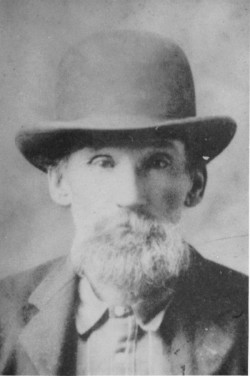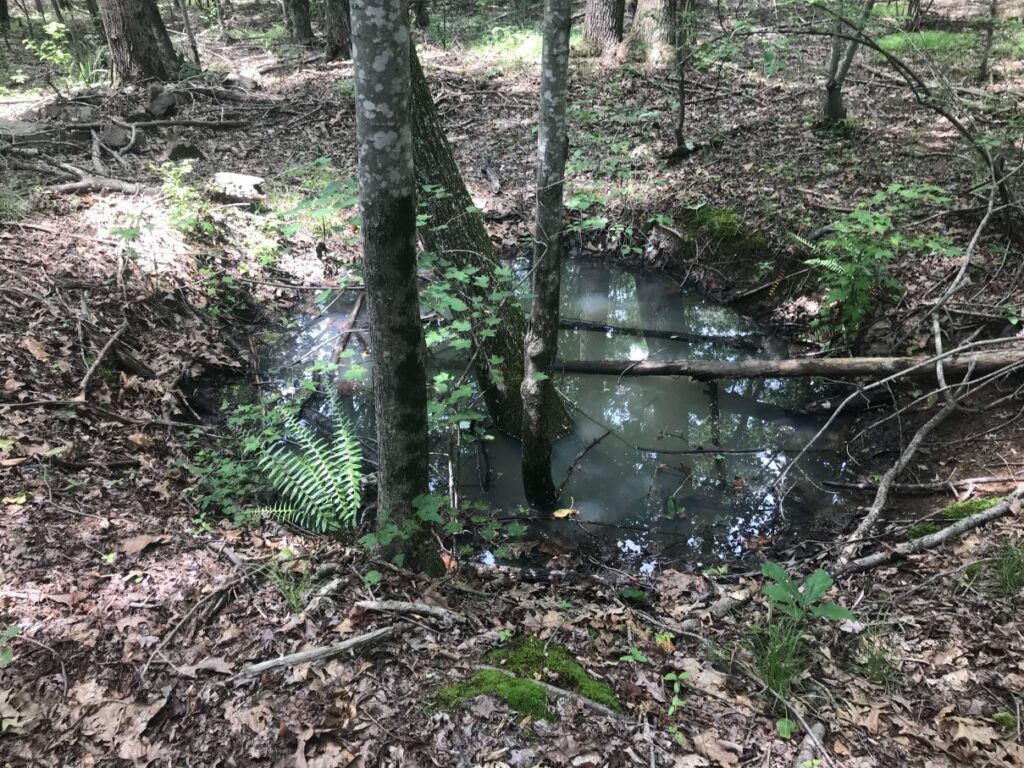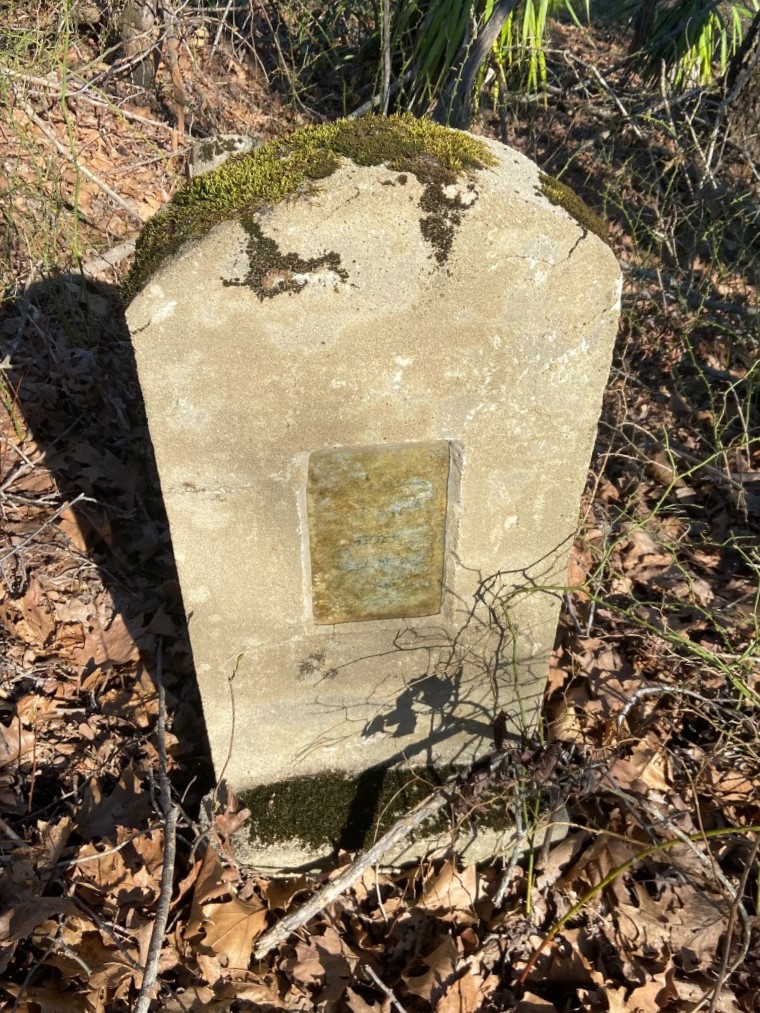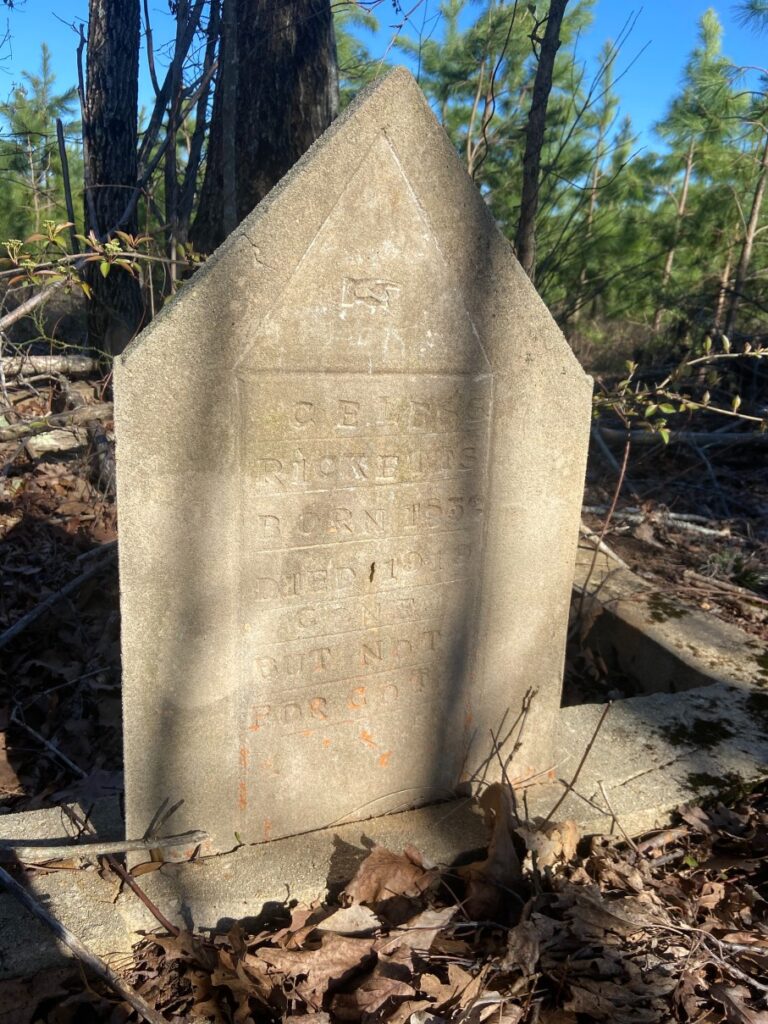
**This research was first published in the May 28, 2025 edition of the Chatham Star-Tribune newspaper as part of Kyle Griffith’s weekly segment entitled “Heritage Highlights.”
James Wesley Hearp Sr. (1850-1924) of Dry Fork
The life of James Wesley Hearp unfolded in the hills near Dry Fork over a century ago. Some people remember him as German Jim, or Jim Hearp Sr. Foremost Jim was a farmer, but he involved himself with several other trades like blacksmithing, prospecting, gold mining, beekeeping, and making tombstones. The 1850 census was taken just four months before his birth. It showed his grandmother Susan Hearp was listed as head of household, while Jim’s parents-to-be were both about twenty-four years old. His father Nathaniel W. Hearp worked as a shoemaker, probably making leather work brogans for local farmers He married Miss Almiranda Elliott, (AKA “America”) whose extensive family connects in some way to most major families around Dry Fork. Also living in the home was Nathaniel’s sister Margaret, who was married to Almiranda’s brother William Elliott, a blacksmith. About five months prior Margaret had given birth to a son they named James W. Elliott who was therefore a double first cousin to James W. Hearp.
By 1860, Jim moved in with his other grandmother, Mrs. Nancy Gaulding Elliott (who is also my ancestor). Some of his neighbors at that time included the farms of Berryman Mills (b.1828), Peyton Pigg (b.1800), Joel T. Stowe (b.1830), and James Banister Hardy (b.1831). Sometime in the 1870s, Jim became acquainted with Miss Lucy Ann Ricketts, whose father Reuben was listed as a merchant during the 1870 census. In addition, Reuben also became acquainted with Jim’s sister Miss Gabriella Celeste Hearp, and both couples were married in 1875. Interestingly for Lucy, this pairing made Celeste a sister-in-law and also mother-in-law. Jim and Lucy raised an extensive family of six daughters and five sons. In order they were Lorena, Janie, Albert, Helen, Jim Jr., Lounettie, Ben, Hutch, Lillie, Eva, and Earl. Priceless insight into the family’s history has been documented and preserved in the book “Along the Dry Fork Road” by the late S. Dail Yeatts, whose grandfather Coleman B. Yeatts lived very close to the Hearp family. Years later, Jim Hearp Jr. acquired a license to operate a distillery and then ran a store at the junction of Franklin Turnpike and Dry Fork Road.
There had been several previous attempts at gold mining in the 1850s near White Oak Mountain by J.W. Hearp’s maternal relatives at the Elliott Mine. Around the turn of the century he started a new effort to search for more gold. Newspaper reports hint that there were at least a few notable finds, but not enough to be worthwhile. Dail Yeatts described from family stories how “the mine shaft was like a well going straight down. There was a windlass and a rope was wound around the axle…the dirt was brought to the top, carefully searched, and the unwanted dirt was piled up around the shaft.” As of a few years ago, I visited a couple of remaining mining pits around White Oak Mountain that now appear as waterlogged holes with trees and other overgrowth reclaiming the spot.
A Pit on White Oak Mountain Said to be an Old Gold Mine
J.W. Hearp attended the early congregation of Hopewell United Methodist Church. He lived to be seventy-three years old and was buried at his family cemetery in 1924. The burial site remains nearly forgotten, situated a shallow distance into the woods near an old log house that has partly fallen down. Scattered among fieldstone markers, some of the handmade tombstones are also knocked down and several examples of his handiwork can be seen. One style is a simple rounded shape made from concrete. It has no carvings, but features a small glass plate that framed an inscription, but it has since deteriorated with age. Another stone for his sister “Celess” was made using letter stamps pressed into concrete. It seems that he was missing a letter I, which he substituted with the number 1 in “R1CKETTS,” and it ends with “GONE BUT NOT FOR GOT.” Jim’s own tombstone, however, is a more formal marble stone with perfect lettering. He passed away on August 16, 1924. The stone has since tipped backwards and has an epitaph that reads “Eternal rest give to him O Lord.”





